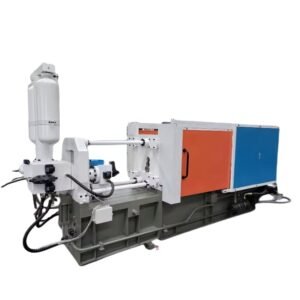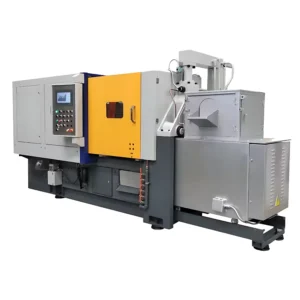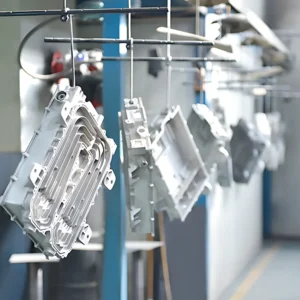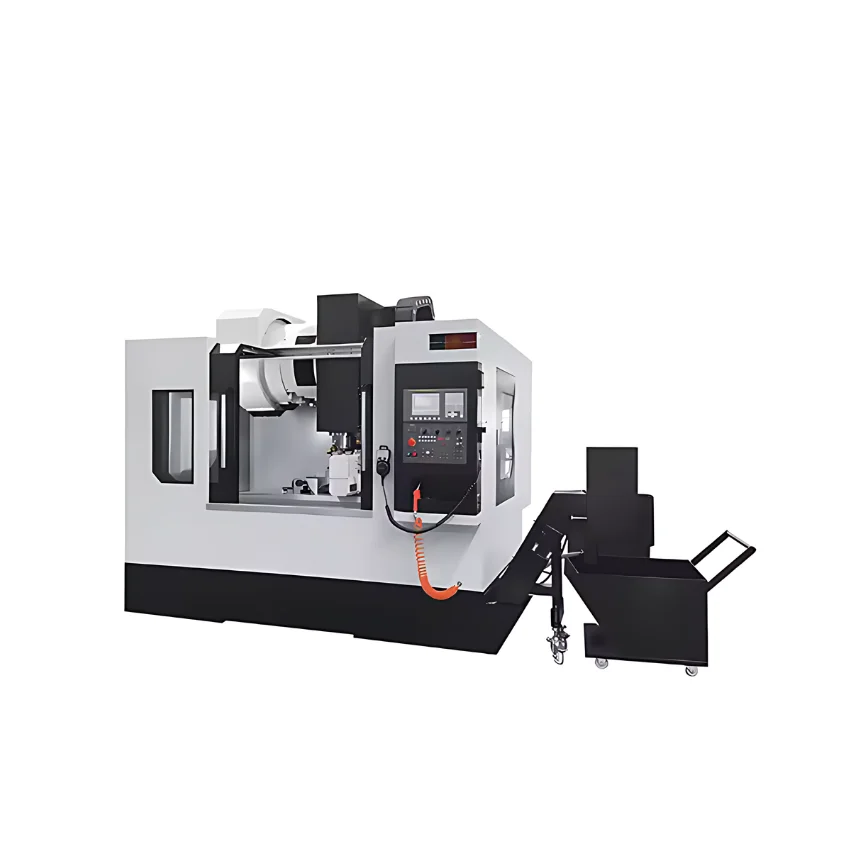Various types of milling machines specialize in precision cutting and plastic machining of metals and other materials. They are widely used in many industrial sectors such as aerospace, and automobile manufacturing.
Read on as this article discusses the various types of milling machines and learn about the uses of various milling machines.
Milling Machine Definition
A milling machine is a mechanical device used for machining metals or other materials. It is capable of performing cutting, drilling, and milling operations on a variety of complex shapes and is one of the most commonly used machine tools in manufacturing.
works by utilizing a high-speed rotating milling cutter to cut the workpiece, which can achieve a variety of machining such as flat surfaces, grooves, gears, threads, and so on. It is characterized by high precision and versatility and is widely used in fields such as machinery manufacturing, mold processing, and the automotive industry.
Parts of a Milling Machine
Understanding the main parts of a milling machine can help you better understand the structure of the milling machine, the following is about the main parts of the milling machine:
- Base: The foundation of the milling machine, which supports all other components and ensures stability.
- Column: The vertical part that supports the spindle and overarm; it houses the drive mechanism and provides vertical movement.
- Knee: The adjustable part of the machine that supports the worktable and can be moved vertically.
- Saddle: Located on the knee, it supports the worktable and allows for horizontal movement.
- Worktable: The surface on which the workpiece is clamped; it can move in multiple directions to facilitate various operations.
- Spindle: The rotating component that holds and drives the cutting tool.
- Overarm/Arbor Support: Extends from the column and supports the arbor (the shaft that holds the milling cutter).
- Arbor: The shaft that holds the milling cutter and is supported by the overarm.
- Motor: Powers the spindle and provides the necessary motion for cutting.
- Control Panel: Contains the controls for operating the machine, including speed and feed adjustments.
- Quill: The part that moves the spindle up and down.
What are the Different Types of Milling Machines?
There are many types of milling machines, and understanding the uses and advantages of each type will help you better choose the right service for your project.
Listed below are 9 different types of milling machines outlining their uses and benefits:
CNC Milling Machine
- Working Principle.CNC milling machines remove material from flat or contoured surfaces by controlling the tool with a computerized numerical control system.
- Application.It is used in industries such as automotive, aerospace, and electronics where precise cutting is required.
- Advantages.With high precision and automated production, it can complete complex designs with minimal human intervention.
Click here for CNC milling services.
Vertical Milling Machine
- Working Principle. A vertical milling machine cuts the workpiece by rotating a vertical milling cutter. In order to ensure accurate cutting by the tool, the workpiece can be positioned under the milling cutter. In addition, the milling cutter rotates at extremely fast speeds to cut the workpiece into the desired shape.
- Application.Commonly used for machining grooves, grooving keyways, machining flat surfaces, as well as engraving and making fixtures.
- Advantages.Better visibility during operation and usually more accurate than horizontal milling.
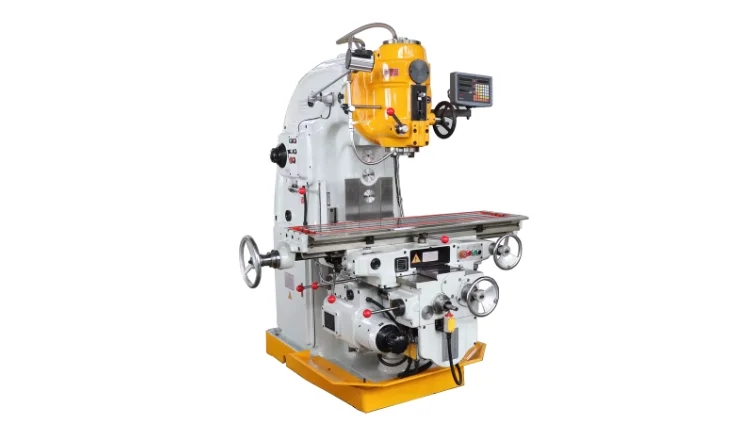
Horizontal Milling Machine
- Working Principle.The horizontal milling machine uses a horizontally installed milling cutter to cut the workpiece. At the same time, the milling cutter can also rotate and move in the horizontal direction to remove the surface material being processed, thereby forming the required shape.
- Application. Ideal for machining large and heavy objects, or grooving operations such as grooving or cutting gears.
- Advantages: Ability to handle heavier, thicker materials, often faster cutting speeds.
Turret Milling Machine
- Working Principle.With a fixed spindle and a table that moves perpendicular and parallel to the spindle axis, the Turret Milling Machine is able to adjust the cut at different angles, allowing for highly flexible and versatile machining.
- Applications.Typically used for milling lighter materials, including drilling and light machining.
- Advantages.Flexibility and versatility for environments with frequent adjustments to operations and for smaller job use. In addition, the head can be tilted for angle cutting.
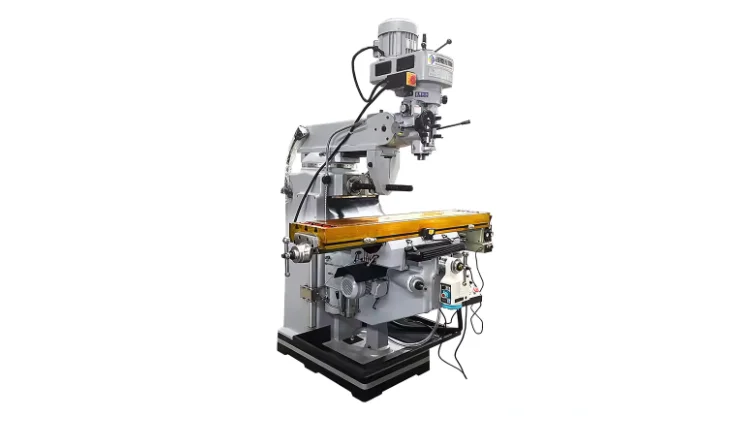
Universal Milling Machine
- Working Principle. Combining the cutting methods of a horizontal milling machine and a vertical milling machine, the Universal Milling Machine’s worktable can rotate 45 degrees to both sides. In addition, the Universal Milling Machine’s cutter head can be rotated to move laterally through the material.
- Application. Typically used for helical or angular milling of complex shapes and materials.
- Advantages. Horizontal and vertical milling operations can be performed on a variety of materials and shapes.
Planer type Milling Machine
- Working Principle. The workpiece is fixed on the workbench, and the workbench can move horizontally along the guide rail, allowing the milling cutter to cut, thereby removing the workpiece material and processing the workpiece.
- Application. Ideal for machining large parts, including those used in aerospace and heavy industry.
- Advantages. Ability to handle heavier workpieces and perform high-precision machining of oversized workpieces.
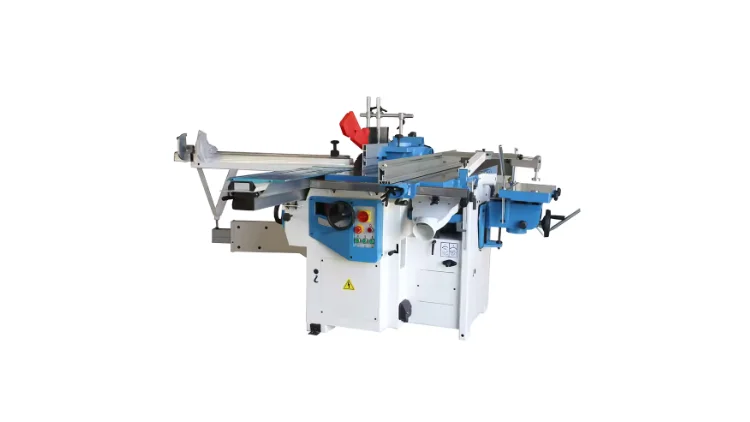
Tracking Control Milling Machine
- Working Principle. A template is first selected and fixed which has the exact shape or pattern of the part to be machined. The cutting tool then automatically resolves the path movement to accurately replicate the design on the template onto the material.
- Applications. Used to manufacture complex and intricate designs.
- Advantages. The ability to automatically replicate complex contours and shapes without the need for manual programming.
Miniature Milling Machine
- Principle of operation. Works similarly to a standard milling machine, but the miniature milling machine is smaller in size and can machine small parts with high precision.
- Applications. Commonly used for micro-milling in medical and electronic applications.
- Advantages. Capable of machining extremely fine and precise workpieces, suitable for microchip layout and complex engraving.
Bed Milling Machine
- Working Principle. The work table of the bed milling machine can only move in the direction perpendicular to the spindle axis. Unlike other types of spindle movement, the bed milling machine table moves vertically up and down, ensuring that the tool is always in a vertical resting position.
- Application. Suitable for processing heavy and large industrial parts, such as frames, plates, and molds that require high precision.
- Advantages. solid structure, fast cutting speed.
How to Choose the Right CNC Milling Service Manufacturer
When choosing a machining service manufacturer, there are several key factors to consider to ensure that you get high-quality, efficient machining for your project:
Experience and Expertise
Look for a service company with a proven track record and extensive experience in operating different types of milling machines. In addition, experienced operators are more likely to understand the nuances of various materials and machining processes.
Technology and Equipment
Evaluate the type of milling machine they use. Advanced technology, such as CNC (Computer Numerical Control) machines, usually have greater precision and capability. Make sure their equipment is well-maintained and suitable for your desired project needs.
Quality
Consider whether there is a robust quality inspection process in place. This includes accuracy checks, compliance with dimensional tolerances and inspections to ensure the final product meets all specifications.
Capacity and Turnaround Time
Consider production capacity and turnaround time. A good processing service provider should be able to meet your production requirements efficiently and deliver within your timeline.
Summary
Choose China Casting Synergy Group for professional CNC milling services.
With over 20 years of industry experience, we are your ideal casting manufacturing partner. Our team is committed to delivering top-notch parts at an affordable price and ensuring that every product meets the highest standards.
Request a CNC machining quote through our easy-to-use form and let us provide you with the best service and solutions.

